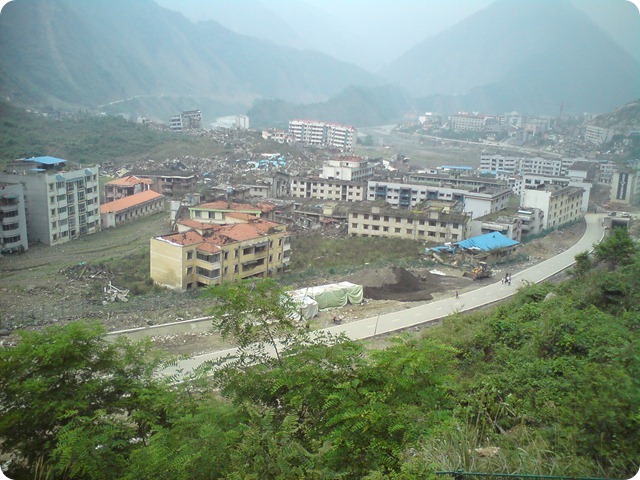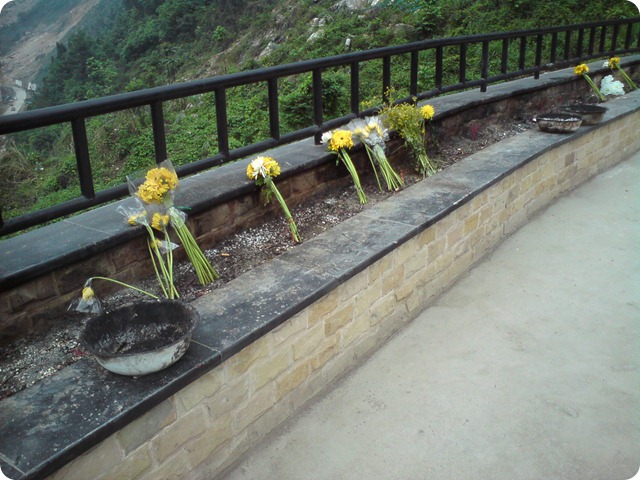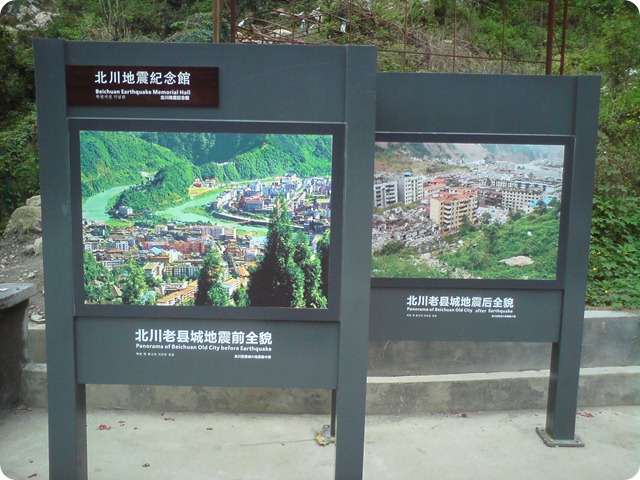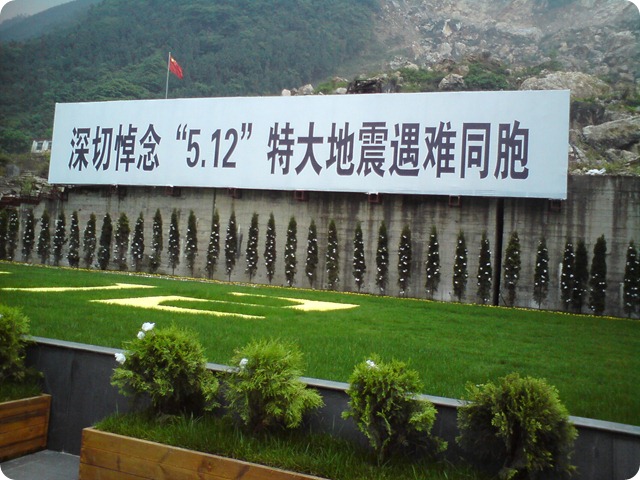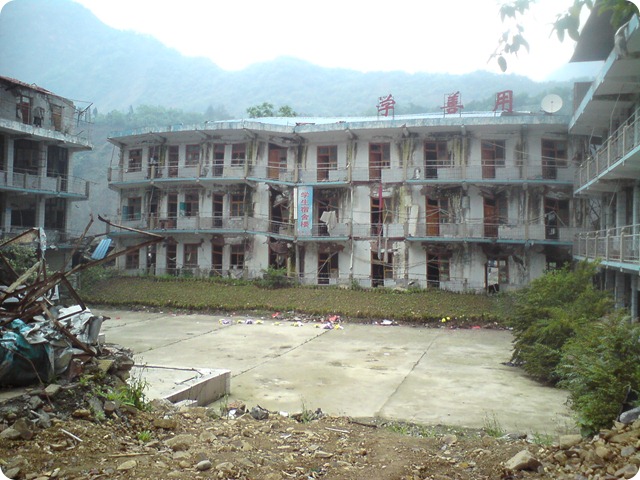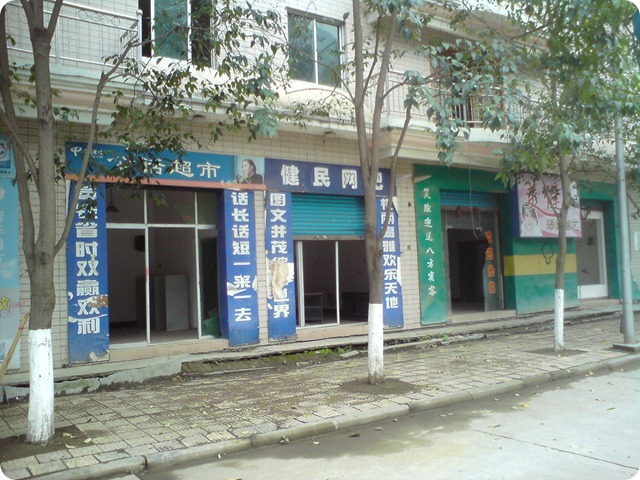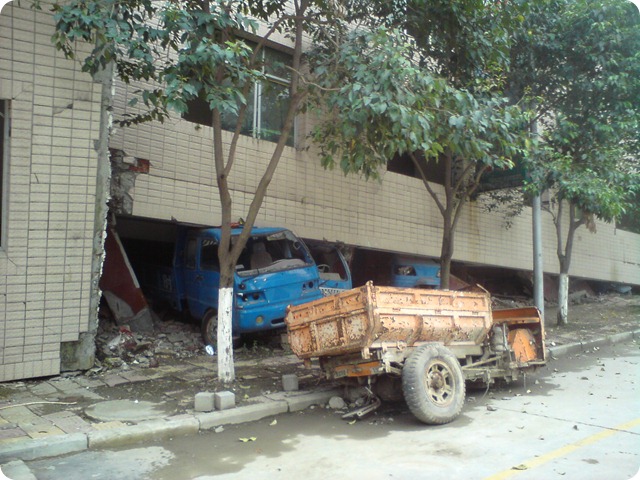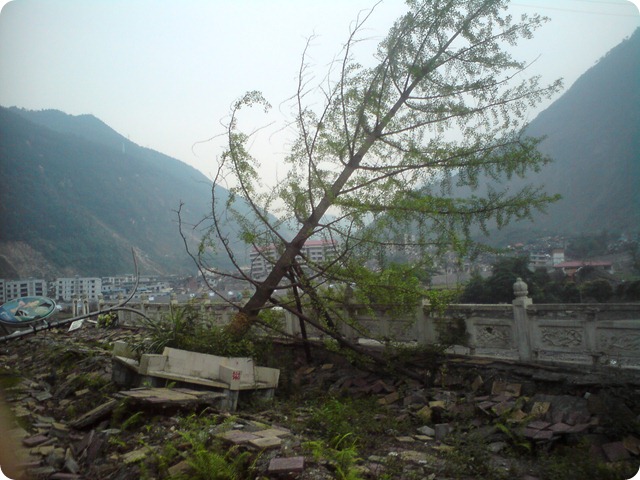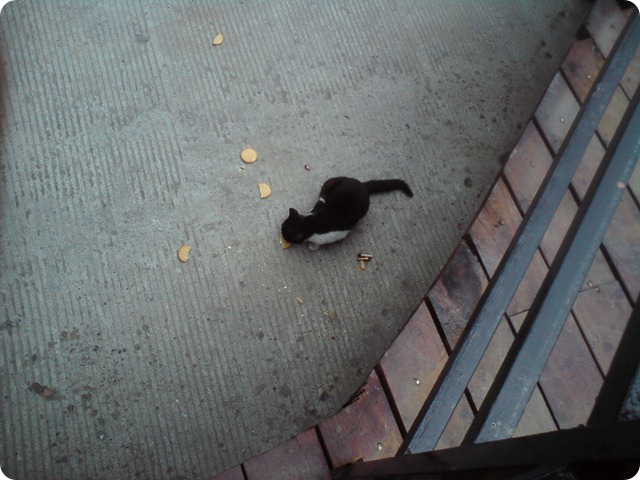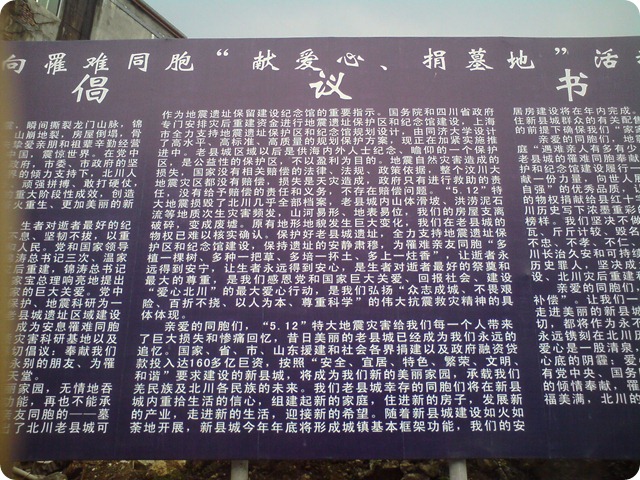At 14:28 on May 12, 2008, an 8.0 magnitude earthquake occurred in Wenchuan County (汶川县), Sichuan Province. Beichuan County (北川县) is adjacent to Wenchuan, and houses throughout the county collapsed seriously. According to the eighth press conference on the Wenchuan massive earthquake disaster at 5:30 PM on May 20, as of 16:00 on the 20th, the earthquake in Sichuan had caused 8,605 deaths and 9,693 injuries in Beichuan County.
Although the news reported this, I definitely believe the number of victims is far greater than this figure—especially after I had the fortune to visit the old Beichuan county town on the second anniversary of the earthquake.
The day before yesterday (May 17, 2009), I had the fortune to visit the old Beichuan county town two years after the earthquake. Beichuan County Town has been built into a large earthquake ruins museum park; it is currently still under control, accepting only a limited number of tourists daily. Entering it, I was truly shocked by the scene inside. This immersive feeling is incomparable to images on TV or the internet—the buildings in the valley between two mountains have completely become ruins, with not a single one intact.
Currently, there is only one road to enter Beichuan County Town. The intersection is guarded by military police, and it is obvious that this road has been renovated, likely specifically for use by the earthquake ruins site. From the roadside, one can see the full view of Beichuan County Town at the foot of the mountain.
Along this road entering the county town, one can see fresh flowers and incense offered by mourners everywhere on the roadside.
A panoramic view map of pre-earthquake Beichuan County Town by the roadside contrasts strongly with the current Beichuan. It really makes one unable to believe that an earthquake lasting only tens of seconds could completely destroy such a huge county town.
The most conspicuous building is none other than the Beichuan Hotel (北川大酒店), which still stands tall after the earthquake. The road at the entrance of the Beichuan Hotel is intact, and the large characters for “Snow Beer” (雪花啤酒) still stand steadily on the roof.
Most of the buildings that were not completely overturned have sunk down by one or even two floors.
Next, I saw a patch of emerald green lawn, known as the “Ten Thousand People Cemetery” (萬人公墓), where the bodies of those who perished in the earthquake are buried. It is understood that this was originally a construction site; the builder had dug a large pit on the ground and laid the foundation to build a building, but the earthquake struck at that moment. Consequently, this large pit was transformed into a public cemetery after the quake.
The once peaceful small alleys are now dilapidated, with only the characters “Yangjiao Lane” (羊角巷 - Ram’s Horn Lane) on the street sign still able to evoke memories.
The interior of the Public Security Bureau building collapsed entirely into the ground, killing dozens of police officers. Now, their names and portraits are displayed at the entrance.
The interior of the Beichuan Vocational High School building collapsed and is almost about to topple over; thousands of students perished.
The photo below is of a small building by the street that has completely collapsed. It is impossible to know what it looked like before the quake, nor how many lives are underneath. The characters “Disinfected by Unit 71 of Troop 77221, 08.07.02” written on it were done after the quake to prevent plague. I heard that at the time, the stench of rotting corpses was overwhelming. The position of the metal railings is very intriguing; these are traces left by people who entered the ruins later attempting to steal them to sell for money.
If you don’t look carefully, you really wouldn’t know that this is actually a roadside building in the ruins; it looks as if it is still open for business. This is probably the best-preserved building.
Unfortunately, right next to it is a collapsed building. You can see many cars waiting to be sold pressed into the ground by the collapsed floors.
A surviving life. It is hard to imagine that this tree stubbornly survived in a situation where it was almost uprooted.
A cat foraging on handouts from tourists weaves through the ruins.
Proposal
“There is no legal, regulatory, or policy basis for state compensation for losses caused by the natural disaster of the earthquake. There is no compensation for the entire Wenchuan earthquake disaster zone. The losses were caused by a natural disaster. The government only has the responsibility and obligation to provide relief; the issue of compensation does not exist."
Last modified on 2017-05-26
